
Icewind Dale is a role-playing video game developed by Black Isle Studios and originally published by Interplay Entertainment for Windows in 2000 and by MacPlay for the Macintosh in 2002. The game takes place in the Dungeons & Dragons Forgotten Realms campaign setting and the region of Icewind Dale, and uses the 2nd edition ruleset. The story follows a different set of events than those of R. A. Salvatore's The Icewind Dale Trilogy novels: in the game, an adventuring party becomes enlisted as a caravan guard while in Icewind Dale, in the wake of strange events, and eventually discover a plot that threatens the Ten Towns of Icewind Dale and beyond.

The Elder Scrolls III: Bloodmoon is the second and final expansion pack for The Elder Scrolls III: Morrowind, developed by Bethesda Game Studios. It was originally released as an expansion set for Microsoft Windows and is included within the Morrowind: Game of the Year edition for Xbox.

Chris Avellone is an American video game designer and comic book writer. He worked for Interplay and Obsidian Entertainment before working as a freelancer. He is best known for his work on role-playing video games such as Planescape: Torment and the Fallout series.
Obsidian Entertainment, Inc. is an American video game developer based in Irvine, California. It was founded in June 2003, shortly before the closure of Black Isle Studios, by ex-Black Isle employees Feargus Urquhart, Chris Avellone, Chris Parker, Darren Monahan, and Chris Jones.
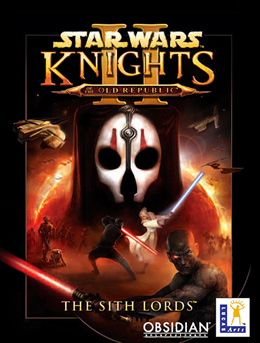
Star Wars Knights of the Old Republic II: The Sith Lords is a role-playing video game developed by Obsidian Entertainment and published by LucasArts. It is the sequel to BioWare's Star Wars: Knights of the Old Republic and was released for the Xbox on December 6, 2004, for Microsoft Windows on February 8, 2005, for OS X and Linux on July 21, 2015, for Android and iOS on December 18, 2020 and for Nintendo Switch on June 8, 2022. Like its predecessor, it is set in the Star Wars universe 4,000 years before the events of the film Episode I: The Phantom Menace and is based on the d20 System developed by Wizards of the Coast.

Vampire: The Masquerade – Bloodlines is a 2004 action role-playing video game developed by Troika Games and published by Activision for Microsoft Windows. Set in White Wolf Publishing's World of Darkness, the game is based on White Wolf's role-playing game Vampire: The Masquerade and follows a human who is killed and revived as a fledgling vampire. The game depicts the fledgling's journey through early 21st-century Los Angeles to uncover the truth behind a recently discovered relic that heralds the end of all vampires.
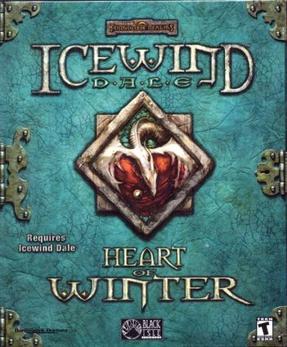
Icewind Dale: Heart of Winter is a 2001 expansion pack to the role-playing video game Icewind Dale, developed by Black Isle Studios and published by Interplay Entertainment. It introduced many changes and additions to the original game, and included a new campaign. A downloadable add-on to this expansion pack, titled Trials of the Luremaster, was released for free. Both the expansion and add-on were included in Icewind Dale: Enhanced Edition.

Icewind Dale II is a role-playing video game developed by Black Isle Studios and published by Interplay Entertainment, released on August 27, 2002. Like its 2000 predecessor Icewind Dale, the game is set in the Forgotten Realms fantasy setting in the Icewind Dale region. The player assumes control of a group of mercenaries in a war between the Ten Towns of Icewind Dale and a coalition of persecuted races and religions.

Neverwinter Nights 2 is a role-playing video game developed by Obsidian Entertainment and published by Atari Interactive. It is the second installment in the Neverwinter Nights series and is the sequel to BioWare's Neverwinter Nights, based on the Dungeons & Dragons fantasy tabletop role-playing game. Neverwinter Nights 2 utilizes an adaptation of the Dungeons & Dragons 3.5 edition rules. Players create player characters to represent themselves in the game, using the same character creation rules as found in the Dungeons & Dragons game. They may gain the assistance of additional party members, and they eventually acquire a keep that can be used as a base of operations. Neverwinter Nights 2 is set in the Forgotten Realms campaign setting—in and around the city of Neverwinter. The story is mostly unrelated to Neverwinter Nights and follows the journey of an orphaned adventurer investigating a group of mysterious artifacts known as "silver shards" and their connection to an ancient, evil spirit known as the King of Shadows.

Baldur's Gate is a fantasy role-playing video game that was developed by BioWare and published in 1998 by Interplay Entertainment. It is the first game in the Baldur's Gate series and takes place in the Forgotten Realms, a high fantasy campaign setting, using a modified version of the Advanced Dungeons & Dragons (AD&D) 2nd edition rules. It was the first game to use the Infinity Engine for its graphics, with Interplay using the engine for other Forgotten Realms-licensed games, including the Icewind Dale series and Planescape: Torment. The game's story focuses on a player-made character who travels across the Sword Coast alongside a party of companions.
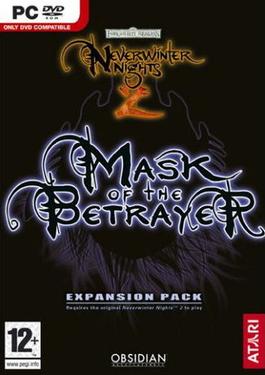
Neverwinter Nights 2: Mask of the Betrayer is a role-playing video game developed by Obsidian Entertainment and published by Atari Interactive. It is an expansion pack for Neverwinter Nights 2. It was released in 2007 for Microsoft Windows in North America, Europe, and Australia. Like the first game, Mask of the Betrayer is set in the Forgotten Realms campaign setting of the fantasy tabletop role-playing game Dungeons & Dragons and employs the 3.5 edition rules.

Neverwinter Nights 2: Mysteries of Westgate is an expansion pack for the role-playing video game Neverwinter Nights 2. It was developed by Ossian Studios and published by Atari Interactive on April 29, 2009. The player creates a character and controls it, along with a group of three pre-designed companions, journeying through the game world. The gameplay is very similar to that of the base game. Mysteries of Westgate also includes new monsters, music, and other tools, which can be used by players to create their own Neverwinter Nights 2 levels.

Neverwinter Nights 2: Storm of Zehir is an expansion pack for the role-playing video game Neverwinter Nights 2, developed by Obsidian Entertainment and published by Atari Interactive. It was released in late 2008 in North America, Europe, and Australia. Like previous entries in the Neverwinter Nights series, Storm of Zehir is based on the paper and pencil fantasy role-playing game Dungeons & Dragons, and uses the game's 3.5 edition ruleset.
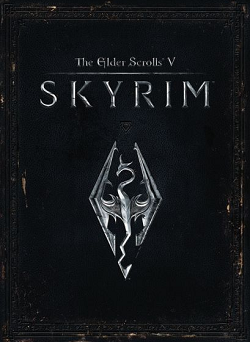
The Elder Scrolls V: Skyrim is an action role-playing video game developed by Bethesda Game Studios and published by Bethesda Softworks. It is the fifth main installment in The Elder Scrolls series, following The Elder Scrolls IV: Oblivion (2006), and was released worldwide for Microsoft Windows, PlayStation 3, and Xbox 360 on November 11, 2011.
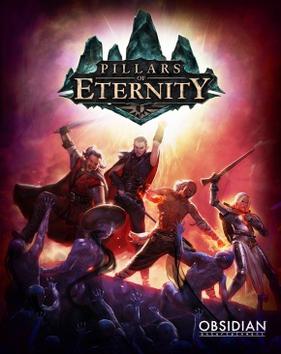
Pillars of Eternity is a role-playing video game developed by Obsidian Entertainment and published by Paradox Interactive. It was released for Microsoft Windows, OS X, and Linux on March 26, 2015. The game is a spiritual successor to the Baldur's Gate and Icewind Dale series, along with Planescape: Torment. Obsidian started a crowdfunding campaign on Kickstarter for it in September 2012. The campaign raised over US$4 million, which was the highest funded video game at the time. The game uses the Unity engine.

Icewind Dale: Enhanced Edition is a remake of the Black Isle Studios 2000 role-playing video game Icewind Dale and its expansions Icewind Dale: Heart of Winter and Trials of the Luremaster. Enhanced Edition was developed by Overhaul Games, a division of Beamdog, and published by Atari for Microsoft Windows, Mac OS X, Linux, iOS, and Android.
Serpent in the Staglands is an old-school isometric computer role-playing game developed by independent game developer Whalenought Studios for Microsoft Windows, OS X and Linux. Using the tagline "a 90s CRPG in every way but the release date", The game resembles several classic games such as Fallout, Baldur's Gate, and Darklands. The game is notable for being "brutally old-school", lacking several features seen in modern RPGs such as introductory or tutorial levels, automatically updated journals and quest-markers. It also has a distinct pixelated graphics style. The game uses the Unity Technologies' Unity engine.
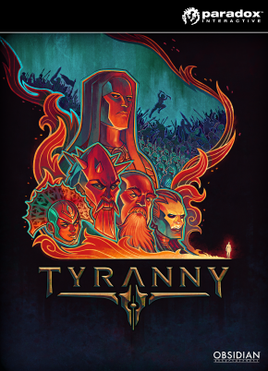
Tyranny is a role-playing video game developed by Obsidian Entertainment and published by Paradox Interactive. The game was released for Microsoft Windows, OS X, and Linux on November 10, 2016.

Pillars of Eternity II: Deadfire is a role-playing video game developed by Obsidian Entertainment and published by Versus Evil. It is the sequel to 2015's Pillars of Eternity, and was released for Microsoft Windows, Linux, macOS in May 2018, and for PlayStation 4, and Xbox One in January 2020. A version for the Nintendo Switch was originally announced in 2018, but has been ultimately cancelled in February 2022 after multiple delays. The game was announced in January 2017 with a crowdfunding campaign on Fig, where it reached its funding goal within a day.
Avowed is an upcoming action role-playing video game developed by Obsidian Entertainment and published by Xbox Game Studios. Avowed will take place in the same universe as Pillars of Eternity in the world of Eora. The game is currently scheduled to be released in 2024 for Windows PC and Xbox Series X and Series S.


















